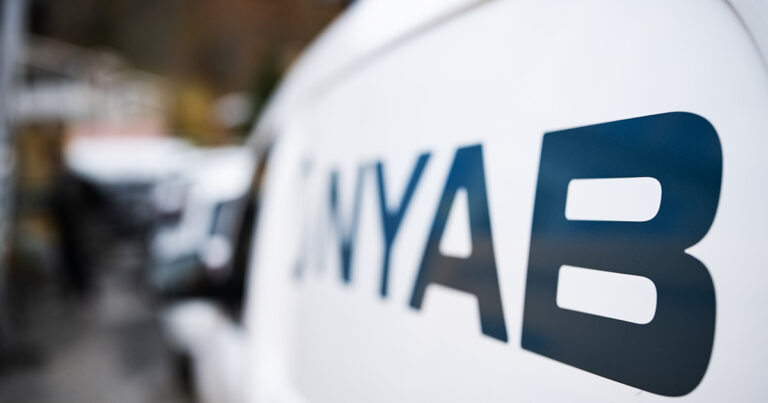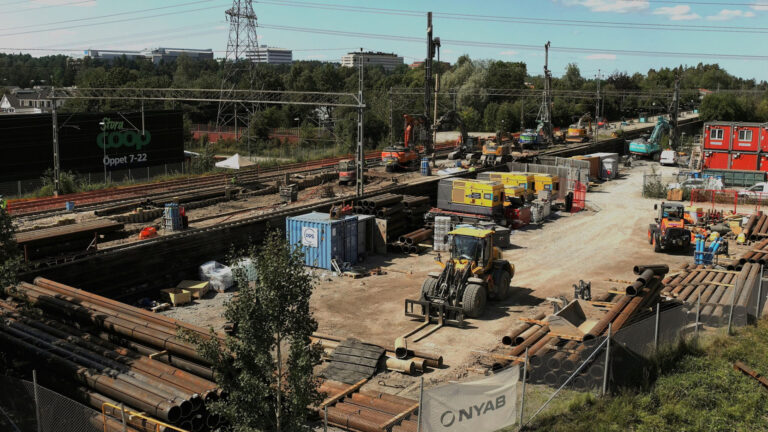First of its kind in Finland – Skarta had a major role in the closure of the Hitura mine
21.10.21Hitura mine in Nivala went bankrupt and needed to be closed down. The closure was a long project and included several surprises. The project was completed on schedule in September. Thanks to Skarta, the large pond areas have now been processed to be safe, and the hectare-wide leftover stone piles are growing clover.
A nickel and copper mine has been located in Nivala, Northern Ostrobothnia, since 1970. Its latest owner, Canadian Beldevere Mining, went bankrupt in 2015, and in 2017 the Northern Ostrobothnia Centre for Economic Development, Transport and the Environment (ELY) decided on the closure of the mine in accordance with the environmental permit. The project has been massive in terms of hectares, working hours as well as expenses. Excluding close to two million euros of guarantee financing of the mining company, the costs of approximately 20 million euros have been paid by the government.
The two-stage closure operation took four years and was completed in September, but the active water purification in the area will continue for years. A mine closure project of this large scale has never been done in Finland before, nor any with these structures. The area of the mining concession is around 350 hectares in its entirety, of which around 100 hectares is the actual actively used land that is closed down.
The most important and critical part of the work was the protection of waters: part of the mining concession is groundwater areas and a nearby river, Kalajoki, was in danger of being contaminated as well. In addition, ore-dressing sand in the air caused environmental and residential disturbances in nearby areas. All problems were able to be solved, and the waters were rescued.
Enormous tailing ponds and steep moraine piles
In the first phase of the project, focus was in conveying the contaminated waters of the area for purification. Fortum Waste Solutions Ltd was the main contractor in the first phase. The second phase of the closure began in May 2019 and was ordered from Skarta. The work included covering the tailing pond and the settling pond, as well as processing the leftover stone piles to be safe and landscaping them.
Ponds, covering several hectares altogether, needed to be treated so that rain and melt water cannot flow through them and mix with groundwaters. Ponds with their whirling ore-dressing sand were covered with a tight layer of moraine, and layers of clay and soil were set over it. Clover and some other grasses were planted on top for landscaping and to prevent erosion.
Contaminated leftover stone piles of the mine, that were surrounding the ponds in the area of around 20 hectares, were dozens of meters tall and steep and also needed to be processed to be safe. The piles were made more gently sloping and they were compressed with clay and topsoil. Ditches were dug around the piles to convey rain and melt waters out of the area in a controlled manner.
Surprises in the ponds
“When we arrived at the location in 2019, some ponds were still covered with rain and the ground was practically soft sludge. It was impossible to even walk in the area, not to mention large machines. We started the work by drying the ground to improve its carrying capacity, so that we could start the actual work”, Matti Helaakoski, CEO of Skarta Infra (Niskasen Maansiirto) describes the beginning of the project.
The cloudy water in the ponds was also challenging because nobody could see what should be expected underneath. As the mine was from the year 1970 and had seen several owners, and everything hadn’t previously been documented according to current requirements, there was no exact information on the structure of the ponds even in paper.
Timo Karjalainen, leading water management expert at the Northern Ostrobothnia Center for Economic Development, Transport and the Environment tells that the dam structures of the ponds were expected to be moraine, for example. It was planned to be used for the covering of the ponds, but it was discovered that some of the embankments were made of ore-dressing sand that wouldn’t be used anymore. This caused, among others, new arrangements for conveying water and larger-than-expected need for moraine at the working site.
That is to say that there were surprises on the way and the work plans needed to be reconsidered during the project. According to Karjalainen, Skarta was proactive and often came up with solutions to the problems, such as moraine. When enormous amounts of land masses, more than originally estimated and ordered, were needed, Skarta figured out to dig moraine and clay in the mine concession area, which had several positive effects:
“Of course, it was faster and cheaper to get soil from nearby. It also significantly reduced the traffic of heavy machinery, which was important for residents of the area especially from a safety perspective, as a school is also located near the road that goes to the mine area. Digging in the mine concession area also did not cause as heavy burden as working on unspoiled land could have done somewhere else. In addition, digging areas became bowls that we can further use in water treatment, for example.”
Documentation on track
All in all, work in this rare and massive project went smoothly and on schedule despite the challenges. Karjalainen thanks Skarta for the surprisingly flexible attitude to surprises and changes.
“The project left a very positive image. Site managers knew their job and documentation was on track as well, which is very important nowadays. I received all reports, quality assurance documents and all other papers without delay or asking. The whole crew did a high-quality job. Also, spirit at the working site was good, which is extremely important and affects the result of the work.”


